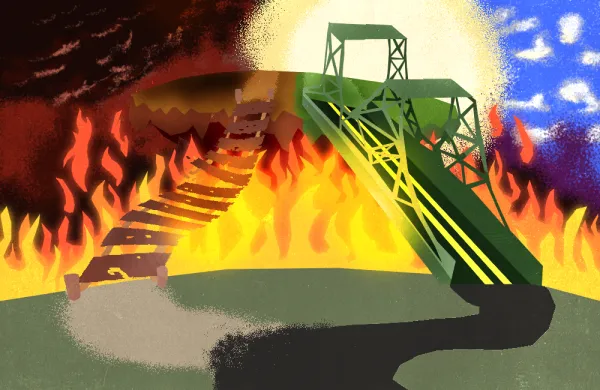Few welcomed the end of the latest bull market. But after years of feverish competition for assets, the declines have created some of the best opportunities that many investors have seen in quite a while — perhaps in their entire careers.
Distressed investor Marc Lasry, chairman and CEO of Avenue Capital Group, got right to the point during a discussion at the Forbes Iconoclast conference in New York. In a world no longer awash in cash, managers with capital finally have the upper hand.
“We’re able to lend anywhere between 10 and 15 percent,” said Lasry. That’s a sharp contrast to the 8 or 10 percent that Avenue could get for its money not too long ago. “It’s changed, and I love it. Anybody who needs money, call. We have terms,” he laughed.
Mary Callahan Erdoes, CEO of J.P. Morgan Asset and Wealth Management, was a little more circumspect. J.P. Morgan, which has more than $4 trillion spread across almost every asset class, serves a broad range of investors. Still, if managers are careful, there’s a lot to do, she said.
But she stressed that it may be the worst time to be a passive investor, one who pours money into every company in a benchmark in an attempt to match the returns of the market overall. After all, she said, the world has just de-risked. But she added that while re-risking is risky, re-risking without any specifics — or simply assuming that yesterday’s 500 companies will be tomorrow’s most successful 500 companies, without understanding the dynamics at play in the world, including war, inflation, and oil crises — doesn’t make sense.
“It is irresponsible to think of allocation to an asset class as a whole,” she said. “So [do] you just allocate to beta? No, you cannot, should not. It would be irresponsible.”
With so many assets, sectors, and regions hit hard by declines, investors disagree about the potential opportunities.
Erdoes said a traditional portfolio made up of 60 percent stocks and 40 percent bonds is now “twice as attractive as it was just a few months ago.” Other attendees agreed that a simple 60-40 mix will start working again as bonds start paying a decent coupon.
However, Mike Aroughetti, CEO of Ares, which has been expanding into investments for mainstream investors, cited the “failing” 60-40 portfolio as one of the reasons that alternatives will continue to be in high demand by retail.
China is another area of disagreement. Many attendees, including a CIO at a family office, were bullish on China, describing the opportunities that will be unleashed once the zero-Covid policy is relaxed and a population that has been under lockdown for years starts to travel and return to normal life.
But Sharmin Mossavar-Rahmani, chief investment officer of consumer and wealth management at Goldman Sachs, said that Goldman has been writing since early 2016 about the headwinds facing China. In fact, she pointed out that $100 invested in China since the trough of the global financial crisis would be worth $188 now, while that same $100 invested in the U.S. would be worth $750. U.S. companies have out-earned their counterparts across all sectors since 2007, and Mossavar-Rahmani doesn’t expect that to change. “It is now even grimmer,” she said. In China, “the debt is higher, they haven’t rebalanced, they have too much property…it’s incredible to us that people are still so positive,” she said.
Of course, to take advantage of the opportunities, investors need cash. Unlike most pensions, Utah Retirement Systems has 8 percent in cash. John Skjervem, chief investment officer at Utah Retirement, said he inherited the cash when he took the job in November. He was a beneficiary of the previous CIO’s deliberate decision to raise cash.
Among other things, Skjervem is investing in startups in nuclear fusion, and he’s looking at opportunities in hydrogen. “It’s not from an altruistic standpoint. If we have dollars in the ground in oil and gas, we have to hedge that position,” he said. The shunning of fossil fuels by many investors has helped. “The exodus of capital has opened up tremendous opportunities.”
One of the risks, however, is a lack of experience with downturns. Greg Lippmann, founder and CIO of LibreMax and the man made famous by The Big Short, said he believes that two-thirds of the people who commit capital are 38 or younger, which means that their experience with financial crises is limited. “People are looking for the Fed to pivot, because the Fed has always pivoted in their career,” he said, referring to past government bailouts that have saved investors from themselves.
For Erdoes, the biggest risk is the world’s fragility. “But you have to be able to take advantage of it. It’s the biggest risk and opportunity. You cannot hide.”







